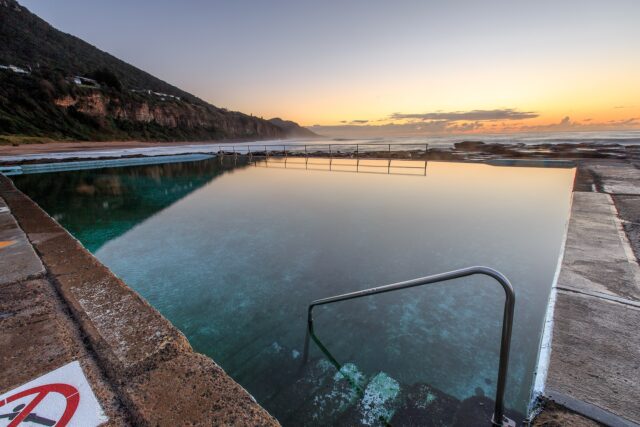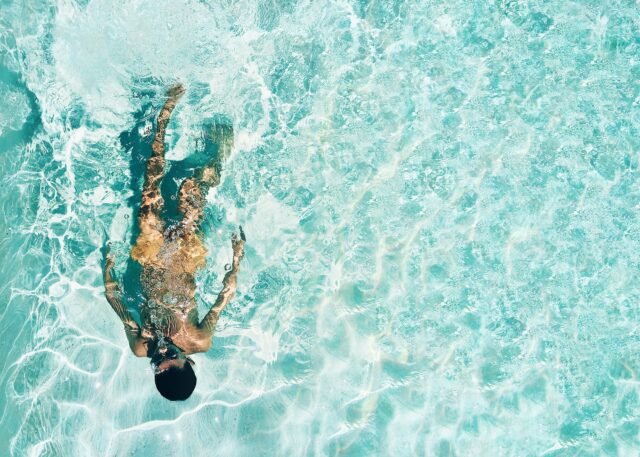
Algaecide, it has been used to treat water since 2000 BC. Back then it was a combination of charcoal, copper and sunlight. Copper sulfate has been one of the most common algaecides used in the pool industry in the modern Era. Four thousand years later it is still a front-line algaecide.
Let’s quickly go over some concepts beforehand:

There are thousands of types of algae known to scientists. Nature can increase the growth of algae on its own, however, airborne fertilizers used by humans can unintentionally make it grow faster. Think of all the airborne fertilizer in areas where pools are located, like golf courses, schools, parks etc. Add to this landscape companies, homeowners, neighbors and their proximity to a pool. As an example every time a potted plant sitting near a pool edge is watered and it drains or splashes into the pool or anytime a poor drainage design allows water to drain into a pool from a planter, you are feeding fertilizer to the algae in our pools, which will certainly help it grow faster, as that is its designed function. Arial application of fertilizer are even harder to control. Landscapers and homeowners are often unaware of what fertilizer does in a pool and how easy it is for algae to grow.
Once you see algae, you must address it, or it will spread quickly. A pool can and will have algae even with perfect readings. We can’t control every human and environmental factor. This is why a clean and serviced filter is essential to reducing algae formation. The type of filter you use matters, as all filters vary a little. D.E., cartridge and sand filters trap debris at different levels, meaning it is easier to remove algae with a D.E. / Quad D.E. filter or a sand filter with glass media supplied (with a multiport backwash valve) than with a standard fiber cartridge or basic silica media sand filter.
Brushing walls as a part of regular service is important whether you have algae or not. Algae has a natural negative charge protective film. For algaecides and disinfectants to be effective, brushing is essential, as it helps to break down the film allowing positive/negative connection chemicals to do their job and kill and control algae.
Continued low levels of chlorine will breed yellow algae first, usually in shaded areas, as direct sunlight helps kill and control algae. Initially it will brush off easily, for maybe the first week or two. Then it will take root and you will need a 50% wire nylon brush to remove and you won’t get it all. You are always better to address it immediately as soon as you see algae. If you continue to come back to the pool with a 0-chlorine reading, the yellow algae will turn to black and green algae. Now you have a real problem. Black and green algae, attach to pool surfaces and dug in, limits your options in terms of removal. Don’t let it get to that point, address it when you first see the problem. You are the expert. I know a lot of people recommend low conditioner levels AT 30 OR 40 PPM, I however recommend 70 PPM (just my opinion). There is a balance between residual chlorine and free active killing chlorine levels. That is why County Health Departments require free chlorine testing.

1. Metallic and silver based, usually in a liquid form. Liquid and crystal form for copper. They are in varied percentages and in different chemical combinations. In a 7% copper as elemental range of strength. They are non-foaming. Copper will turn the water a beautiful Blue. Silver algaecide will turn the water a Tea color like watered down cola. Both are effective in killing yellow (Mustard) algae. Copper is effective in killing green Algae.
Manufacturers claim that they are to be used to control and remove black algae. Yes they will remove black algae, but in my opinion that is mostly a last resort, to be used with a high level of caution.
Metallic algaecides must be used in carefully monitored levels, no more than the manufacturers recommend.
The general public believes that blonde hair turning green from swimming in the pool is caused by high chlorine. It is not, it is caused by suspended copper in the water almost exclusively algaecide, but in rare cases it can be plumbing destruction. There are special shampoos designed to remove the green/ blue from blonde hair. The old home remedy is washing your hair with Ketchup.
So, if your client, or the property you service has people with blonde hair don’t use it or if you do BE CAREFUL. Not to say that it doesn’t attach to dark hair, it does, but in much smaller levels.
Metallic algaecides can, as part of the algae killing act, burn up your chlorine residual. If you use it, be prepared to increase chlorine levels, or you will return to a pool with a 0 chlorine reading. Additionally, if the pool surface is in good condition, the use of metallic algaecides will eventually fall out of water solution and stain the pool surface. That is your blue staining in most cases. Poor chemical testing and improper use of chemicals causing plumbing/heater damage is the majority of blue staining. Metallic algaecides are effective in killing types of algae, but there are side effects.
2. Polymer algaecides are carbon based. They have a positive charge to attach and smother the algae (after brushed exposed negative charge of algae). They are non-foaming and non-staining and are a good continued use algaecide.
Polymer based algaecide might not act quite as quickly as other algaecides. But the fact that there are basically no side effects, is a great starting point on algaecide choices. A good choice for commercial/residential and residual use.
3. There are other polymer type algaecide combinations. One of these is dimethyl benzyl ammonium chloride without poly oxyethylene. These algaecides are foaming but non staining. They are very effective as a first choice in yellow/ mustard algae control. A good residual choice. With this product as with all products, make sure you read and follow directions. If you use too much, the pool will foam heavily, spa use will be a problem on home pools. If over used, even to a small extent, in residential spas as the micro bubbles from jets burst it puts off a slight chemical odor. Good product, just don’t over use it. Foam down can be added if you make a mistake. If over used, it will change the color of the pool water to a shade of a clear green tint. This product has a clear residual and that tint can stay around for a week or more if you over use. Follow directions.
4. Trichloro-s-triazinetone used as an algaecide. It is 3″ and 1” tablets before they are pressed into tablets. It is very effective in killing black algae of the bottom of pools and the lower radius curve of the pool. This is a last resort for algae control. It is usually 99% pure chlorine and dissolves very slow, depending on water temperature. The industry has used it for decades. It has been sprinkled against the pool walls, it then falls down the wall and will sit/stick on black algae. What it sticks on, it kills. It has been used to broadcast onto the pool floor landing on most black spots.
There are a few aftermarket tools available designed to hold a 3″ tablet (it works better if you submerge the tablet prior to installing tablet into the tool). It hardens the tablet reducing the crumbling as you scrape the top slime off the black algae. It leaves a residual that effectively kills the black algae. This is a safe method of black algae removal. It is hard work and takes time, but it works well.
The use of Trichloro-s-triazinetone in a granular form requires high levels of caution for the person using it.
Sodium Bromide is also widely used as an algaecide. It combines shock chlorine with bromide to effectively kill yellow and green algae. It is exceptionally effective in neglected pools, that you think should be drained. I have used a combination of my own design to great results in a very short time period.
There are additional options, these are mostly mainstream options. Please read and follow all manufacturers guidelines. This information is the result of decades of experience in the cleaning and servicing of pools. These are some of the basic information about algaecides and pool cleaning in California. For more details, you can visit the websites of California Department of Public Health, or ICC Digital Codes.
As always, I recommend you make sure that your business is protected and properly insured. Reach out to the insurance experts at California Pool Association and go over the different insurance coverages available for your business. You’ll gain the right information, and learn how to protect your business.